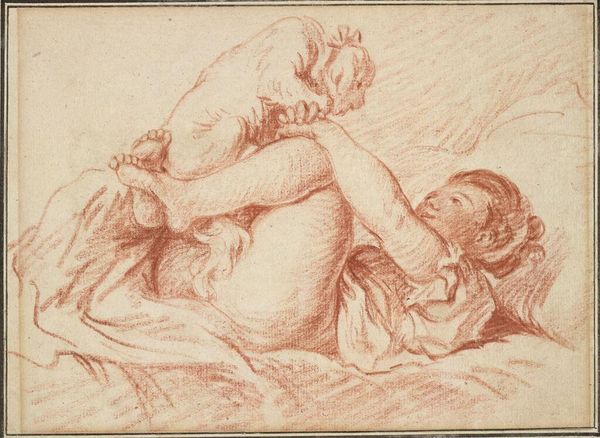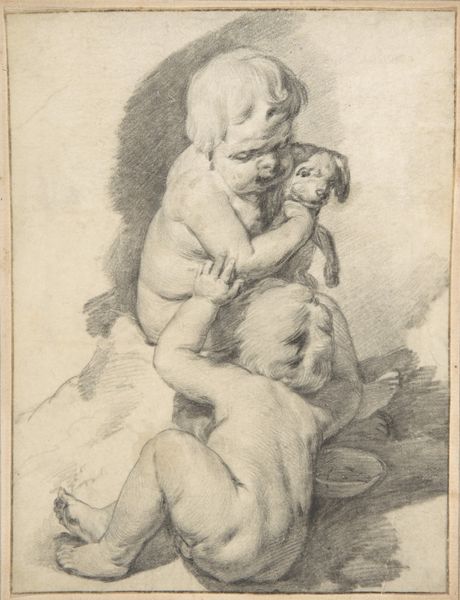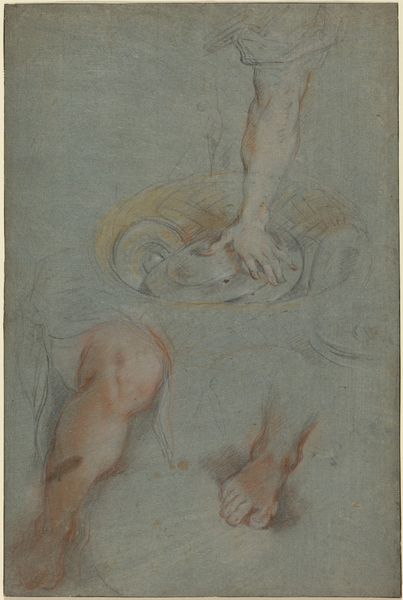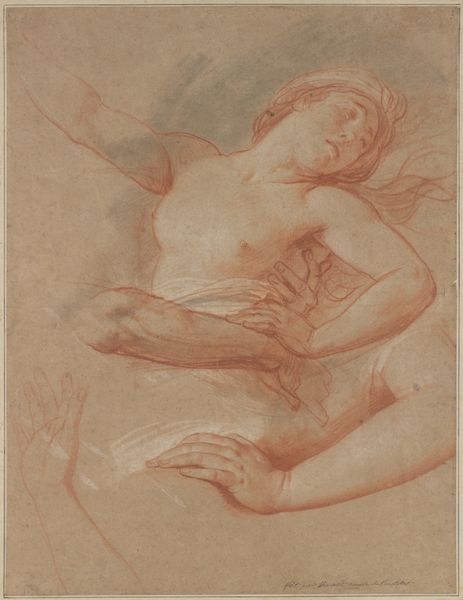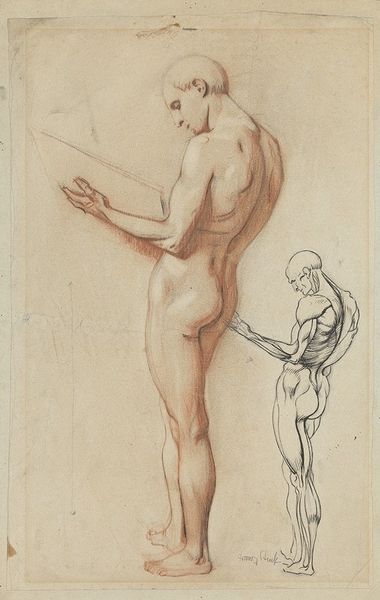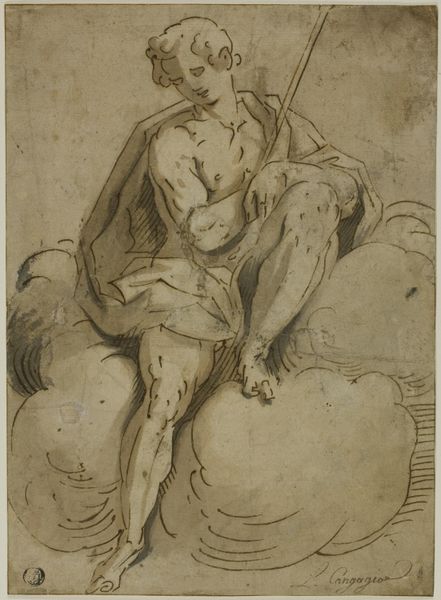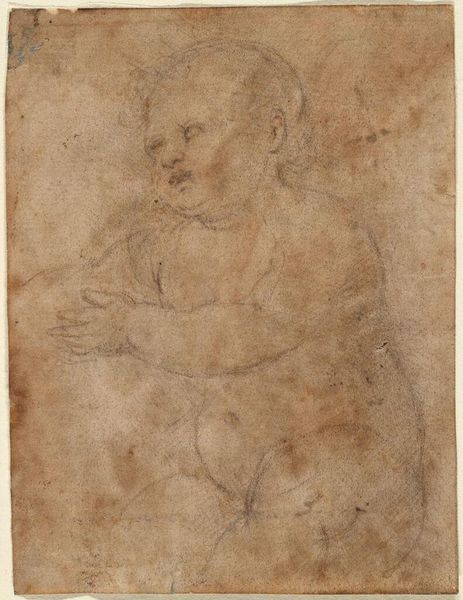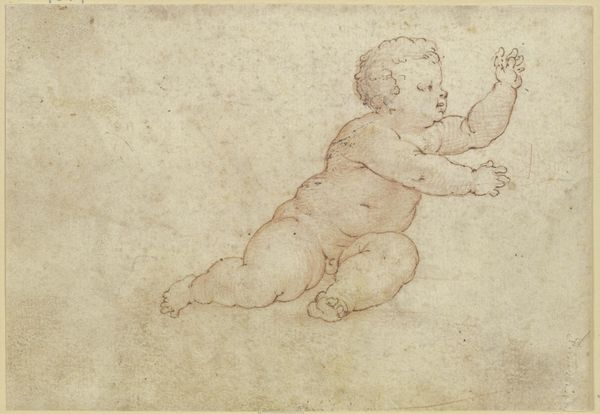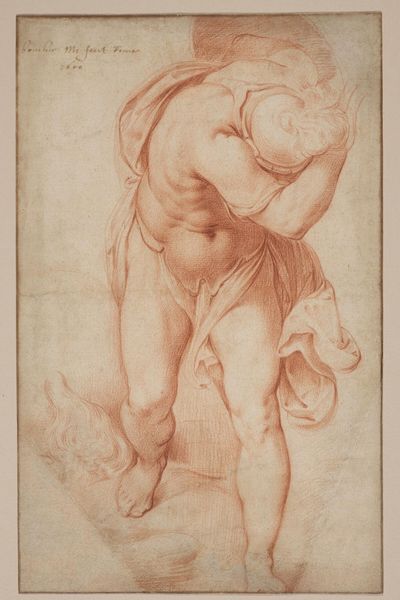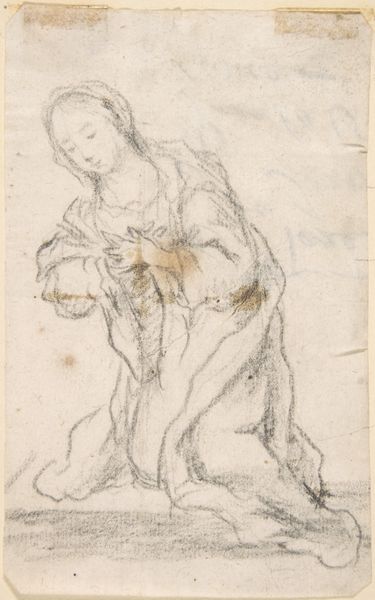
drawing, pen
#
portrait
#
drawing
#
baroque
#
figuration
#
pencil drawing
#
pen
#
portrait drawing
#
history-painting
#
nude
Dimensions: 285 mm (height) x 182 mm (width) (bladmaal)
Curator: Immediately, I’m struck by the vulnerability, the plea embedded in the upward reach. Editor: And I, the rather anatomical rendering of flesh. What are we looking at, exactly? Curator: This drawing by Willem Panneels, dating from around 1628-1630, is titled "Heliade from 'The Three Heliades and the River Po.'" It's part of a larger series based on Ovid's Metamorphoses. Editor: The upward-reaching gesture against that reddish ink gives a warmth against a seemingly blank ground. It certainly emphasizes the musculature and the soft curves simultaneously. Pen and pencil, I understand? Curator: Yes, precisely. Panneels captured not just form, but emotion, in these precise strokes. Consider the Heliades transformed into trees because of their excessive grieving—this single figure carries echoes of sorrow, loss, and a reaching towards the divine. Editor: Grief as transformation... interesting how he visually represents that. It’s not overtly symbolic; the power is in the figure’s expression and pose, an open surrender. I’m thinking also about the role of chiaroscuro here in creating a believable fleshy surface through minimal shading. It suggests three-dimensionality on an otherwise flat surface. Curator: Remember too that history-painting placed symbolic and narrative burden on figures within the composition. Though seemingly alone here, the collective memory of their story permeates her individual presentation. That up reach and pleading is the very symbol for inconsolable transformation. It speaks volumes on inherited burdens of transformation within Ovid's texts. Editor: Well, it is hard to separate it completely from a study for a larger composition; it holds a sense of implied narrative because of this incompleteness in isolation. The visual emphasis would likely change depending on the full image it accompanied. Curator: Perhaps... still, on its own it's a very potent and isolated symbolic figuration of female grieving transformed in time and myth. I'm deeply moved by the continued echo across visual renderings and narratives over time. Editor: And I'm left contemplating the purely aesthetic execution: line, tone, the effective rendering of form on paper... both contribute powerfully to its affect.
Comments
No comments
Be the first to comment and join the conversation on the ultimate creative platform.
